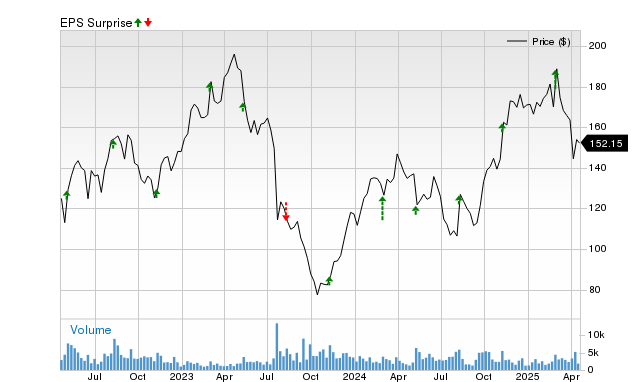Cocoa Prices Rise Amid Market Volatility and Demand Concerns
On Wednesday, May ICE NY cocoa (CCK25) closed up +94 (+1.17%), while May ICE London cocoa #7 (CAK25) also saw gains, rising +52 (+0.90%).
Cocoa prices rebounded from earlier declines to settle moderately higher, attributed to a weaker dollar (DXY00) that prompted short covering in cocoa futures.
Last Wednesday, NY cocoa fell to a 4-week low, and London cocoa reached a 5-month low amid worries about consumer demand. The escalation of the global trade war, coupled with tariffs driving cocoa prices higher, has heightened these concerns. In response to these challenges, Barry Callebaut AG, one of the leading chocolate manufacturers, lowered its annual sales projections last Thursday due to the impact of elevated cocoa prices and tariff uncertainties. Additionally, recent reports from Malaysia indicated a -15.3% year-over-year decrease in Q1 cocoa processing to 84,192 MT, while Brazil experienced a -13% annual decline in Q1 cocoa bean grindings, totaling 52,135 MT. Tomorrow, Asia, Europe, and North America will release their Q1 cocoa grinding figures.
Over the past two months, cocoa prices have struggled, with NY cocoa dropping to a 5-month low on March 21 as supply conditions improved. The International Cocoa Organization (ICCO) projected on February 28 a global cocoa surplus of 142,000 MT for the 2024/25 period, marking the first surplus in four years. Furthermore, the ICCO anticipates an increase in global cocoa production by +7.8% year-over-year to 4.84 MMT for 2024/25.
The recent recovery in cocoa inventories has also been bearish for prices. After hitting a 21-year low of 1,263,493 bags on January 24, inventories monitored by ICE in U.S. ports have risen to a 5-3/4 month high of 1,883,819 bags as of Wednesday.
On April 3, NY cocoa reached a 1-3/4 month high, bolstered by signs of a weak mid-crop cocoa harvest in West Africa. Rabobank reported that inadequate rainfall in the region has hindered crop growth, and recent surveys of cocoa farmers in the Ivory Coast and Ghana have shown disappointing results.
Concerns regarding the upcoming mid-crop in the Ivory Coast are supporting cocoa prices. The mid-crop is the smaller of the two annual cocoa harvests, typically commencing this month, with an average estimate of 400,000 MT this year, reflecting a -9% decrease from last year’s 440,000 MT.
Recent cocoa exports from the Ivory Coast have slowed, providing additional price support. Government data released on Monday revealed that farmers shipped 1.45 MMT of cocoa from October 1 to April 13 this marketing year, showing a +10.7% increase compared to last year; however, this is a decline from the previously reported 35% increase witnessed in December.
Demand concerns continue to pressure cocoa prices. Executives from major chocolate companies, including Hershey and Mondelez, have recently expressed apprehension, noting that high prices affect demand. Mondelez’s CFO Zarmella indicated potential declines in chocolate consumption, particularly in North America, where cocoa demand is reportedly decreasing. The company has also warned that chocolate prices could surge by as much as 50% due to rising cocoa prices, which may further suppress demand. Hershey’s team noted they might have to adjust recipes by substituting cocoa with alternative ingredients. Additionally, Nigeria reported a +27% year-over-year increase in cocoa exports in January, amounting to 46,970 MT, establishing itself as the world’s fifth-largest cocoa producer.
High cocoa prices have evidently diminished demand in Q4, as reflected in the quarterly grinding data. The European Cocoa Association disclosed that Q4 European cocoa grindings decreased -5.3% year-over-year to 331,853 MT, the lowest rate in over four years. Simultaneously, the Cocoa Association of Asia noted a slight fall of -0.5% year-over-year in Q4 cocoa grindings to 210,111 MT, also the lowest in four years. Furthermore, the National Confectioners Association indicated that Q4 North American cocoa bean grindings fell -1.2% year-over-year to 102,761 MT.
Reduced cocoa supplies from Ghana, the second-largest cocoa producer globally, have provided additional price support. In December, Cocobod, Ghana’s cocoa regulator, downgraded its harvest forecast for 2024/25 for the second time this season to 617,500 MT, marking a -5% reduction from an earlier estimate of 650,000 MT.
On February 28, the ICCO reported that the 2023/24 global cocoa deficit reached -441,000 MT, the most significant deficit observed in over 60 years. ICCO data indicated that production for 2023/24 is expected to decline by -13.1% year-over-year to 4.380 MMT, and the cocoa stocks/grindings ratio stands at 27.0%, a 46-year low.
On the date of publication, Rich Asplund did not have (either directly or indirectly) positions in any of the securities mentioned in this article. All information and data in this article is solely for informational purposes. For more information please view the Barchart Disclosure Policy
here.
More news from Barchart
The views and opinions expressed herein are the views and opinions of the author and do not necessarily reflect those of Nasdaq, Inc.


